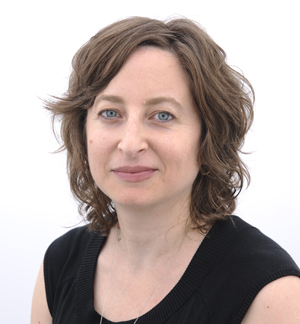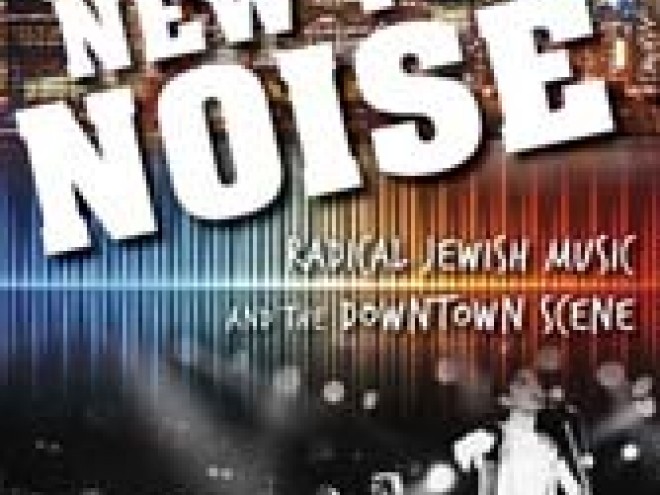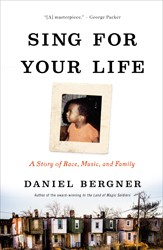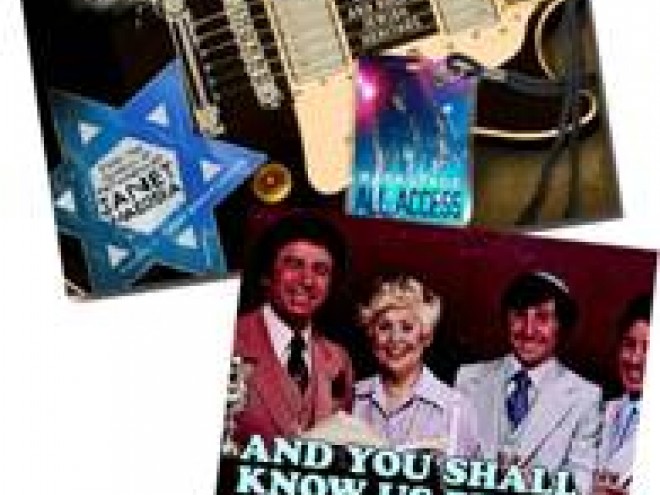Earlier this week, Tamar Barzel wrote about defining radical Jewish music beyond klezmer. Her first book, New York Noise: Radical Jewish Music and the Downtown Scene (Indiana University Press, 2014, with a companion website with audio/video), explores the strange and compelling Jewish music that emerged from Manhattan’s downtown scene of the 1990s. She has been blogging here all week for Jewish Book Council’s Visiting Scribe series.
 This Thanksgiving, I had a couple of friends over. I had recently gotten back from doing research on the creative improvisation scene in Mexico City, and they wanted to hear some of the music I’d brought back with me. But avant-garde jazz, electronic noise experiments and free improvisation are not to everyone’s taste. “Are you sure?” I asked, “It’s pretty weird.” But yes, they were. So I put on something beautiful and really, to my ears, not that strange at all. I would have been happy listening to it all night, but right away, they both got pained expressions on their faces and knocked back some more wine before venturing a series of questions that amounted to “What the hell?” After a while I asked my friend to choose something else, and he put on some Fiona Apple and everyone was happy.
This Thanksgiving, I had a couple of friends over. I had recently gotten back from doing research on the creative improvisation scene in Mexico City, and they wanted to hear some of the music I’d brought back with me. But avant-garde jazz, electronic noise experiments and free improvisation are not to everyone’s taste. “Are you sure?” I asked, “It’s pretty weird.” But yes, they were. So I put on something beautiful and really, to my ears, not that strange at all. I would have been happy listening to it all night, but right away, they both got pained expressions on their faces and knocked back some more wine before venturing a series of questions that amounted to “What the hell?” After a while I asked my friend to choose something else, and he put on some Fiona Apple and everyone was happy.
I love a lot of different kinds of music, including Fiona Apple. But the music that usually grabs me the hardest, and most of the music I write about, is not that easy for most people to listen to the first time around. As 1950s movies about the generation gap (“Turn down that noise!”) and reams of scholarly literature attest (Jacques Attali, Noise), both music and noise carry all kinds of emotional, cultural, even ideological baggage. Noise is disturbing, and, as I know from the experience of introducing work by Ornette Coleman and Albert Ayler to students in my jazz history classes, the line between music and noise is one most people feel they can readily identify even though they can’t agree on where it is.
All this comes intensely into play in the case of Jewish music — as it would in any music, really, that is supposed to have a particular cultural valence, or even to speak, like the violin in Sholom Aleichem’s Stempenyu, in the voice of a people. While there is by now a tradition of Jewish music pairing dissonance with wrenching historical themes (Schoenberg, A Survivor from Warsaw), much of the music I write about is dissonant, noisy, or fragmented just for the sake of it. It can be harder to convince people that this kind of music is Jewishly viable or interesting. But it’s that very nature that I find compelling, both as a sounded object and in a Jewishly usable way.
Take Alvin Curran’s Shofar Rags, released on Tzadik in 2013. I’m sure that to many listeners, a few seconds of the opening of this piece, an erratically patterned sound/noise collage, followed by a long, spacious and relatively static section of exploratory blowing, might signal an affront to Jewish tradition, a confusion over Jewish identity, or a repudiation of Jewish music itself. As Curran writes in the liner notes, the first time he featured the shofar in one of his performances, along with “midi triggered samples … broken accordion and soprano clarinet … and of course my usual counterpoint of taped sounds,” he was answered by “boos and foot drumming from two irate and presumably observant Israeli composers present in the audience.” In response, he wrote the music for Shofar Rags, for which he “had no deep post-modern interest in collective memory, in lost spaces of childhood or Jewish folklore, rather than in the contemporary task of unlocking the sub-atomic particles of resonant animal gas, fusing them with my own spit and breath and hurling this damp ethereal mixture into space … just to see, as one does in art, what might happen.”
To me, hearing the shofar in this context is thrilling. It brings the emotionally, culturally, and physically resonant sound of the shofar — its Jewish voice, if you will — into new territory, allowing it to travel through unfamiliar landscapes and take on surprising sonic characters. And because music has that power to transform us physiologically, it brings me right along with it. Far from sounding like an affront to tradition, I hear this music as an alternative world, one that recasts one’s experiences and perceptions of time, space, and the voice of the shofar itself. “Shofar,” as Curran writes, “is a form of petrified time … when noise, breath, speech and music were all the same.”
I didn’t always love music that takes me to an unfamiliar place. By now, I can’t live without it. And hearing Jewishly resonant sounds woven into inventive sonic landscapes is very moving to me. In a way, listening to this music is a deeply restful experience to me, because it unifies two fundamental aspects of my identity. It’s hard to explain. But if you keep listening, you’ll know it when you hear it.
Tamar Barzel is an ethnomusicologist and lecturer at Harvard University whose research addresses the interface between creative identity, cultural heritage, and adventuresome sounds. She is currently immersed in fieldwork on the creative improvisation scene in Mexico City.
Related Content
- Reading List: Music and Jews
- Essays: Jews, Sports, and Music
- Old Voices, New Questions: Reflections on Music in Jewish Life, Past and Present by James Loeffler
Tamar Barzel is an ethnomusicologist and lecturer at Harvard University whose research focuses on experimental music, with an emphasis on late twentieth-century jazz and the Jewish avant-garde.



